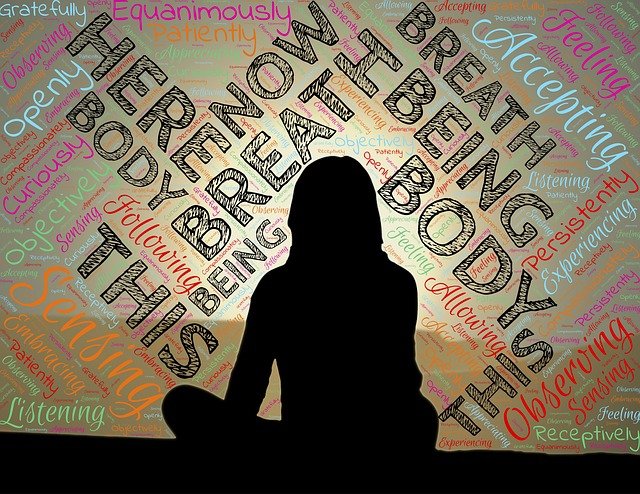6 Ways How to Build Resilience Backed by Science
sub consciousness
Knowing how to build your own resilience works well in times of uncertainty
The British writer and journalist Graham Hancock, a specialist in rather unconventional theories that involve ancient civilizations, has written the following: “I believe we are a species with amnesia, I think we have forgotten our roots and our origins. I think we are quite lost in many ways. And we live in a society that invests huge amounts of money and vast quantities of energy in ensuring that we all stay lost. A society that invests in creating unconsciousness, which invests in keeping people asleep so that we are just passive consumers or products and not really asking any of the questions.”
Graham Hancock’s quote is perfect opening that lead us to defining what’s resilience. Linguistically speaking it is the power of the ability to return to the original form, position or state, after being bent down, crashed or broken, or in Graham Hancock’s terms, suffering from amnesia of who you really are.
In terms of psychology, resilience is the ineffable quality that enables people to come back stronger than ever, after being severely knocked down in life. In more medical terms, it is the immune system, the ability to recover from illness, depression or adversity. It works both ways, physically and mentally.
#1 Engage with meditation and mindful practices

Source : Pixabay
As gurus of mindfulness meditation wish to remind us, during our daily lives, our brains get virtually dizzy from all sorts of mind-boggling thoughts. These can be worries of something that has happened in the past – yesterday or even 10 years ago. Other thoughts are worries of the future. But, mindfulness meditation is something that shifts your brain into the present moment, to the nowness. It enables you to forget about your problems, your bills, your administration, work or anything that might be bothering you. It is in the Now where we can find peace and get away from our fears, anger, despair or other negative emotions.
Through using meditative practices like the Body Scan, you go from toe-to-head and release tension that may have anchored in particular parts of your body. If you have a pain in your neck, a pain in your back, a dancing eye, it could all speak volumes about the anxiety semantics. Body Scan has the capacity to release those focal points of anxiety. Once free from anxiety, the individual is better able to use their powers and inner capabilities, especially when hectic days come around. Further on, another study says that meditation training creates a distinct network of genes, that act well on anti-aging and improves cellular health.
#2 See Life Through Another Pair of Spectacles: Re-write the narrative
What would happen if you sit down and write 15-20 minutes about your anxiety, your fear, your issue? How well you can tackle your problem by just writing? It is not a task or a method where you are asked to do a masterpiece of a writing. Moreover, it is your introspective momentum through which you can gain much insight of how much words can have the actual power to change you personally. So use your words. Use the writing that will emerge from your sub consciousness.
This is also close to what the representatives of surrealism did in their early days. They practiced so called automatic writing, also known as the surrealists’ automatism, something that later on psychoanalysts would embrace themselves (Freud included). The automatic writing would enable the writer to just put down on paper their stream of thoughts, without resisting any of the thoughts. It enables the practitioner to reach deeper realms of the mind, turn the story upside down and find the niche that will work out just well.
A 2014 study also states that engaging with writing down your thoughts, allowing yourself to express and go deeper and deeper with what’s going in your mind, enables the practitioners to become more engaged with life in general afterwards. As art therapist would recommend coloring as one of the best alternatives to meditation, psychologists would also very often recommend keeping a diary or a memoir, or just scheming down thoughts in a notepad, as something that has therapeutic effects for the patient.
So yes, grab a pen, have your memoir ready and start writing. This will enable you to adjust the narrative of your own life. Imagine it, just as you are adjusting your computer settings, writing can be just much about adjusting your own resilience.
#3 Expose yourself to your fears

Fears are like piranhas for our mental, and consequently, our physical well being. What are your fears? Can you divide them into two groups? The first be it rational fears, the second – the irrational ones. Your resilience is oftentimes threatened by both, but what you can eliminate at ease, is to work on the irrational fears which you may face.
The mechanism of fear is that it pushes us back in life and that immediately decreases our capability to be resilient and innovative with what’s it gonna be our next step in life. What if your irrational fear is reliving a huge earthquake that does not happen every other day, however it could happen. Should you really tremble and fear the thought of it? It’s a distraction. What about when the earthquake really hit? Will you allow to be overwhelmed by your fear at the cost maybe of your own life?
Try to overcome fears by exposing yourself little by little to it. This is so in order you gain a more positive association with the thing you fear of. We are not asking you to stimulate an earthquake here, just so you can feel more comfortable in case it happens, but take on something more practical, something that bothers you every day – you name it. Don’t let your fears be your piranhas. Instead, you turn into a piranha for your fears.